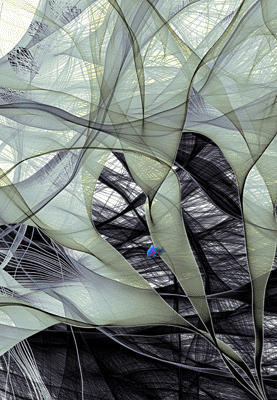A new iPad app from online artwork marketplace Pixels.com allows consumers to visualize artwork on their walls before purchasing. Push notifications keep consumers up to date with favorite artists.
When Sean Broihier, the founder and CEO of online artwork marketplace Pixels.com thought about launching an app, he didn’t want to just recreate the content on the marketplace’s web site. After all, Broihier—who does all the programming for the company’s web sites and apps—had just launched a responsive design web site a year ago.



 Your new post is loading...
Your new post is loading...









That web site allows consumers to browse and shop the pieces from artists and photographers in Pixels.com’s catalog. But an app should offer something more, Broihier says. It’s a big leap to expect that a consumer will go out and find a brand’s app, download that app and then shop in the exact same way she can on a web site. “You really have to offer consumers something that’s truly unique in the app,” he says.
And what’s the unique thing in Pixels.com’s app? It’s an augmented reality component called “View On Your Wall” that leverages the iPad’s camera to allow consumers to visualize a specific piece of artwork on their wall before purchasing.
A consumer prints a target and attaches that to her wall where she wants to visualize the artwork. Using the iPad app, she holds the iPad facing the wall, selects a piece of artwork, and the artwork will appear on the wall within the iPad’s screen. If she tilts the iPad, the artwork visualization will tilt with her.
She can try out different sizes, framing options and a variety of art. Once the artwork looks exactly the way she wants it, she presses the Buy button, which locks in the changes and selections she made while visualizing the art on her wall.
The app also includes a social media component that allows consumers to follow their favorite artists, photographers, artwork and photographs and share them with their friends—all within the app. If consumers sign up for push notifications—alerts that pop up regardless of whether an app is open or closed or whether a smartphone or tablet is on or sleeping—they receive a notification when a favorite artist or photographer uploads new work.
Artists and photographers upload artwork to Pixels.com and decide what prices they want to charge for specific sizes. For example, if a photographer uploads an image of a skyline and sets the price for an 8x10 at $10, Pixels.com will give the photographer $10 for each 8x10 sold. Pixels.com marks up the price to the consumer. The cost of frames and matting is added on as well. For example, if an artist wants to receive $500 for an 8x10 artwork, and a customer adds matting that costs $20, Pixels.com might sell the artwork to the consumer for $600.
Graphic wall design e-retailer Fathead debuted a similar mobile app last year. Dubbed Big Shot, the iPhone and Android app was built with Detroit Labs, a sister firm under an umbrella company owned by Quicken Loans creator Dan Gilbert.
A consumer prints off a target and tapes it to her wall in her home, then opens the app, selects the Fathead graphic she wants to see on her wall, then snaps a picture of the target from eight to 10 feet away.
The target is needed so the app can properly scale the large graphic to the wall. She then has a picture of the graphic in her home that she can share with friends and family via Facebook.
Pixels.com has gone many steps further, enabling consumers to add frames and other customizations and then lock in a selection and make a purchase in the app.